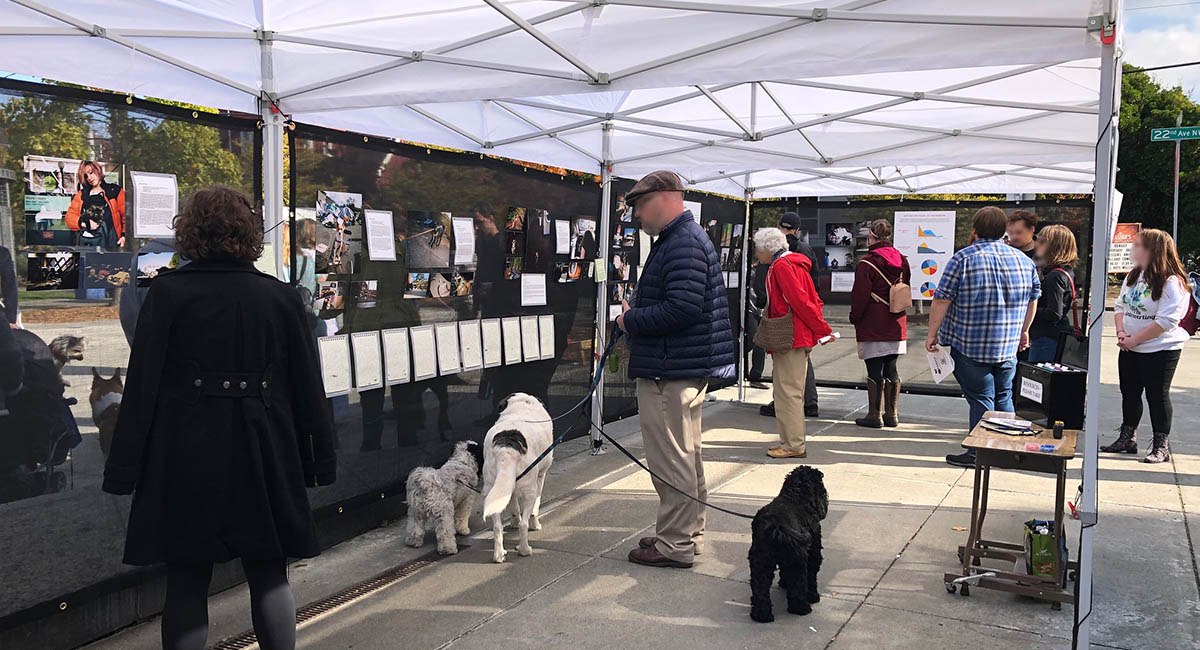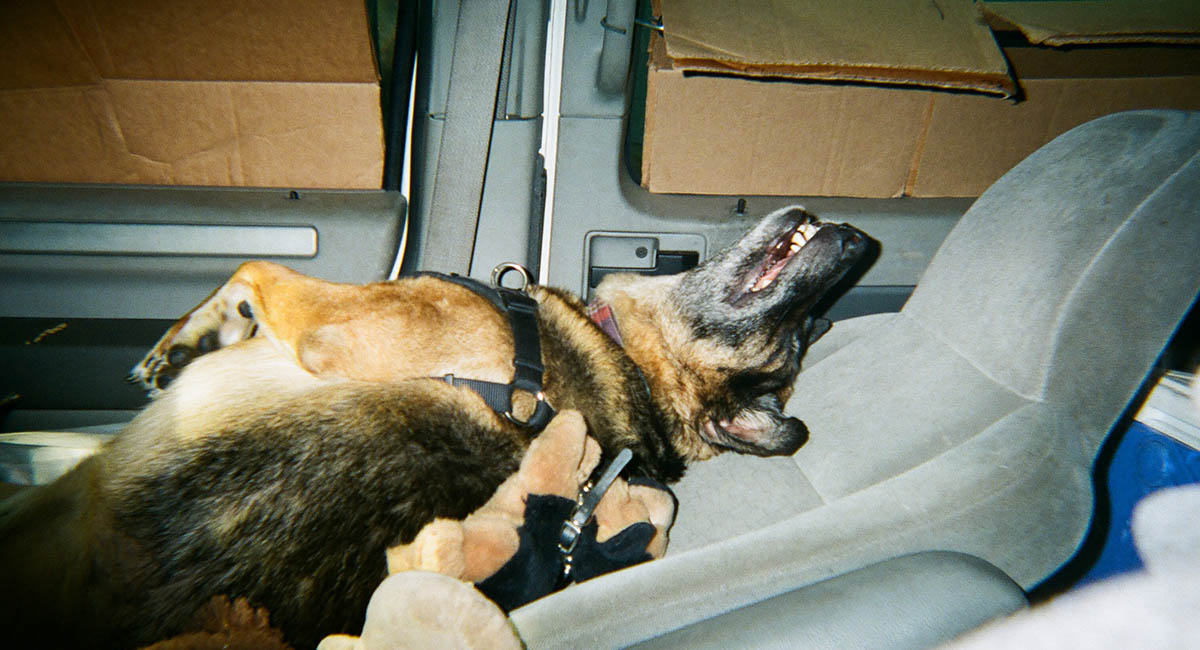
The photos vary: a cat sitting on the dashboard of a motorhome, squinting into the sun. A dog napping against their human as they rock in a hammock. But all of the photos tell personal stories of what it’s like to experience homelessness while having a pet.
These autobiographical photos have been shared in public displays around the Seattle area over the past few years. Now, new research published in the journal PLOS ONE and funded by the University of Washington Population Health Initiative is sharing the importance that these personal stories can have on the public’s perception of homelessness.
“Collectively, the images, stories and themes deepen our understanding of homelessness with pets, leading to increased empathy and potential for policies that benefit the health of people experiencing homelessness and their pets,” the authors wrote in the paper.
Researchers at the University of Washington School of Public Health who worked on this project used a method called Photovoice to help people experiencing homelessness tell their own stories about the importance of pets in their lives. While the research affirmed what has long been known — that the pet and human bond has important benefits for people’s well-being — it also demonstrated the importance of helping people share their own stories through public health research, said Gemina Garland-Lewis.
Garland-Lewis, the lead author of the research, is a photographer and research coordinator at the Center for One Health Research in the Department of Environmental & Occupational Health Sciences, where studies of the important bond between people experiencing homelessness and their pets is an ongoing project. She conducted the first part of the study in 2018-19, when she collected photos and journal entries from 19 individuals in Seattle who were experiencing homelessness and had semi-structured interviews with them about their lives.
Rather than taking the photos herself, Garland-Lewis gave participants disposable cameras in waterproof bags, so they could capture their own stories. Participants produced over 900 images.
“As a researcher, when you're designing a survey, it's kind of the same idea as taking a picture of someone else's life; you're deciding what you think is interesting,” Garland-Lewis said. “But maybe that's not what somebody wants to tell you about what is most important in their life. So handing that over and having it be truly participant driven, you’re getting to see the participants’ perspective without my input.”

One photo a participant shot was of a dog asleep in their lap. When Garland-Lewis first saw the photo, she assumed that this was a shot of where the person was sleeping. But the participant shared that this photo was of a sunny day when they took their hammock and dog to Green Lake Park to relax in the afternoon sunshine.
“That’s a story that can be said of anyone, regardless of housing status,” Garland-Lewis said. “People like to go and enjoy being outside in Seattle with their pet.”
Telling a story like that can help people who aren’t experiencing homelessness form a connection with those who are. Garland-Lewis and fellow researchers helped facilitate this storytelling by setting up pop-up exhibits of these photos around the Seattle area, especially in areas where people who are unhoused were living. The photos and context provided by participants through their journal entries were displayed, and researchers stood by to help answer questions.
“More people are going to come to an exhibit and think to themselves, ‘I have a photo just like that of my dog at Green Lake in the hammock, I have something in common with someone I didn't think I did,’ and as soon as you think that, it opens up the door to getting more people drawn into this work than they would if we only published an academic paper,” Garland-Lewis said.
The exhibits shared some of the benefits of pets on the health of people experiencing homelessness, including serving as a motivator for daily self-care, finding housing, and maintaining sobriety, as well as improved mental health and resiliency.
But people’s bond with pets is so strong that it could also prevent them from accepting services like housing, food or employment if their pet had to be abandoned in the process. This brought up the importance of policies that can be inclusive of pets. Some of the policies recommended by participants included having foster care for pets, fewer restrictions prohibiting pets from housing, pet-friendly shelters and free veterinary services and pet food, and access to service animal training for their pets.

In total, more than 500 visitors stopped by these exhibits around Seattle in 2019. Some of the visitors responded to prompts from the researchers to share how their perspectives might have changed after seeing these photos.
One participant who observed the exhibit wrote: “I never understood how/why people who are experiencing homelessness could have pets when they can barely support themselves. Turns out that maybe if more emotional support animals exist, unstably housed people could better their mental health.”
Researchers also asked people experiencing homelessness what they hoped would come about from sharing their photography. One youth wrote:
“I just want people to know, stop treating homeless people like they’re lesser than people. Because like we’re just like everybody else, we all have feelings, we all need somebody, and we all need a human connection in our lives. Like, people telling us to get lost, that we don’t deserve to be on this earth, and ‘Oh, you guys don’t deserve to have anything that makes you happy, you guys shouldn’t have animals, you guys shouldn’t have anything.’ Like, it’s society’s fault that a lot of people are becoming homeless in the first place.”
Garland-Lewis said researchers have continued plans to share these photos in pop-up exhibits around the city. They also hope to dive deeper into specific subsets of populations, such as youth experiencing homelessness who have pets, and understand their specific needs. In the meantime, Garland-Lewis hopes this work inspires other communities to engage in similar Photovoice research projects that share important public health perspectives.
Fellow co-authors of this research include Vickie Ramirez and Peter Rabinowitz of the UW School of Public Health and Emily Scott of the UW School of Medicine and University of Colorado Department of Medicine. This research was part of a larger collaboration between the UW Schools of Public Health, Nursing, Social Work and Law.